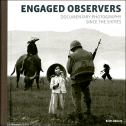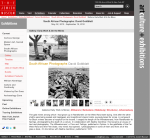 "Another way is to look closely at his photographs. He had future generations in mind when assembling his portrait gallery of eminent contemporaries; he wanted to present posterity with a “convincing and sympathetic likeness” of the people he admired. Roland Barthes (who thought Nadar was the world’s greatest photographer) confessed that his own fascination with photography was “tinged with necrophilia … a fascination with what has died but is represented as wanting to be alive”.
"Another way is to look closely at his photographs. He had future generations in mind when assembling his portrait gallery of eminent contemporaries; he wanted to present posterity with a “convincing and sympathetic likeness” of the people he admired. Roland Barthes (who thought Nadar was the world’s greatest photographer) confessed that his own fascination with photography was “tinged with necrophilia … a fascination with what has died but is represented as wanting to be alive”.We can’t really know someone by peering at a photograph taken 150 years ago (the same is true of a selfie taken 15 minutes ago). Yet the magic of Nadar’s portraits – their sincerity, their freshness, the unwavering faith they demonstrate in the possibility of capturing a piercingly accurate psychological likeness – tempts us to forget our scepticism, to look past the sepia tint, the old style hats and coats, and our doubts about the veracity of photographic images. We’re tempted, when we first see them, to trust the spark of recognition, that instant when we come face to face with a fellow being who’s alive and knowable."
The absurd life of Félix Nadar, French portraitist and human flight advocate - The Guardian


